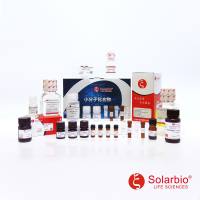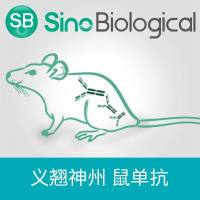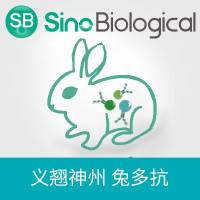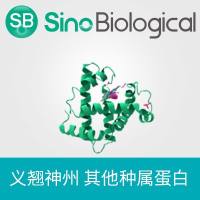【进展|热点】PD-1信号通过上调BATF抑制HIV特异性CD8阳性T细胞的功能
丁香园论坛
1839
Nat Med. 2010 Oct;16(10):1147-51. Epub 2010 Oct 3.
Transcriptional analysis of HIV-specific CD8(+) T cells shows that PD-1 inhibits T cell function by upregulating BATF.
Quigley M, Pereyra F, Nilsson B, et al.
Department of Pediatric Oncology, Dana-Farber Cancer Institute, Harvard Medical School, Boston, Massachusetts, USA.
CD8(+) T cells in chronic viral infections such as HIV develop functional defects including loss of interleukin-2 (IL-2) secretion and decreased proliferative potential that are collectively termed 'exhaustion'. Exhausted T cells express increased amounts of multiple inhibitory receptors, such as programmed death-1 (PD-1), that contribute to impaired virus-specific T cell function. Although reversing PD-1 inhibition is therefore an attractive therapeutic strategy, the cellular mechanisms by which PD-1 ligation results in T cell inhibition are not fully understood. PD-1 is thought to limit T cell activation by attenuating T cell receptor (TCR) signaling. It is not known whether PD-1 also acts by upregulating genes in exhausted T cells that impair their function. Here we analyzed gene expression profiles from HIV-specific CD8(+) T cells in individuals with HIV and show that PD-1 coordinately upregulates a program of genes in exhausted CD8(+) T cells from humans and mice. This program includes upregulation of basic leucine transcription factor, ATF-like (BATF), a transcription factor in the AP-1 family. Enforced expression of BATF was sufficient to impair T cell proliferation and cytokine secretion, whereas BATF knockdown reduced PD-1 inhibition. Silencing BATF in T cells from individuals with chronic viremia rescued HIV-specific T cell function. Thus, inhibitory receptors can cause T cell exhaustion by upregulating genes-such as BATF-that inhibit T cell function. Such genes may provide new therapeutic opportunities to improve T cell immunity to HIV.
PMID: 20890291 [PubMed - in process]
内容简介
活化的T细胞表面PD-1分子与配体结合,传导抑制性共刺激信号(co-inhibitory signal),弱化TCR信号,导致CD8阳性CTL失去活性、衰弱(exhausted),进而降低T细胞介导的HIV免疫效应。应用PD-1单克隆抗体阻断相应信号,可回复(rescue)CTL介导的抗病毒免疫功能。人源化抗PD-1单克隆抗体CT-011在实验室研究中表现出良好的反应性和敏感性,2008年夏天已开始临床II期试验。
PD-1信号的核心元件是其分子胞内段的ITIM和ITSM,通过启动下游信号发挥抑制效应。但PD-1分子相关联的信号分子尚不清楚。本研究采用HIV特异性CD8阳性T细胞,通过筛查T细胞系和HIV患者原代CD8阳性T细胞中PD-1信号触发的表达上调与下调的基因,探寻到3个特异性表达上调的转录因子:BATF, signal transducer and activator of transcription-1 (STAT1)和interferon regulatory factor-9 (IRF9)。采用构建BATF过表达载体转染T细胞,并应用siRNA策略考察BATF蛋白对T细胞分泌相应细胞因子能力的影响,深入探讨了BATF分子的生物学功能及其与HIV特异性T细胞活性之间的关系。文章认为,PD-1介导的抑制性信号除了可以降低TCR传导的特异性刺激信号外,还可以特异性上调AP-1转录因子超家族成员BATF的表达,降低T细胞活性。
如作者所言,即使在病毒存在的环境中,应用抗体阻断PD-1信号后,病毒特异性T细胞的功能可部分恢复。深入发掘PD-1诱发的下游信号途径,了解相应抑制性表征分子,有助于开发新的抗病毒免疫疗法。
Transcriptional analysis of HIV-specific CD8(+) T cells shows that PD-1 inhibits T cell function by upregulating BATF.
Quigley M, Pereyra F, Nilsson B, et al.
Department of Pediatric Oncology, Dana-Farber Cancer Institute, Harvard Medical School, Boston, Massachusetts, USA.
CD8(+) T cells in chronic viral infections such as HIV develop functional defects including loss of interleukin-2 (IL-2) secretion and decreased proliferative potential that are collectively termed 'exhaustion'. Exhausted T cells express increased amounts of multiple inhibitory receptors, such as programmed death-1 (PD-1), that contribute to impaired virus-specific T cell function. Although reversing PD-1 inhibition is therefore an attractive therapeutic strategy, the cellular mechanisms by which PD-1 ligation results in T cell inhibition are not fully understood. PD-1 is thought to limit T cell activation by attenuating T cell receptor (TCR) signaling. It is not known whether PD-1 also acts by upregulating genes in exhausted T cells that impair their function. Here we analyzed gene expression profiles from HIV-specific CD8(+) T cells in individuals with HIV and show that PD-1 coordinately upregulates a program of genes in exhausted CD8(+) T cells from humans and mice. This program includes upregulation of basic leucine transcription factor, ATF-like (BATF), a transcription factor in the AP-1 family. Enforced expression of BATF was sufficient to impair T cell proliferation and cytokine secretion, whereas BATF knockdown reduced PD-1 inhibition. Silencing BATF in T cells from individuals with chronic viremia rescued HIV-specific T cell function. Thus, inhibitory receptors can cause T cell exhaustion by upregulating genes-such as BATF-that inhibit T cell function. Such genes may provide new therapeutic opportunities to improve T cell immunity to HIV.
PMID: 20890291 [PubMed - in process]
内容简介
活化的T细胞表面PD-1分子与配体结合,传导抑制性共刺激信号(co-inhibitory signal),弱化TCR信号,导致CD8阳性CTL失去活性、衰弱(exhausted),进而降低T细胞介导的HIV免疫效应。应用PD-1单克隆抗体阻断相应信号,可回复(rescue)CTL介导的抗病毒免疫功能。人源化抗PD-1单克隆抗体CT-011在实验室研究中表现出良好的反应性和敏感性,2008年夏天已开始临床II期试验。
PD-1信号的核心元件是其分子胞内段的ITIM和ITSM,通过启动下游信号发挥抑制效应。但PD-1分子相关联的信号分子尚不清楚。本研究采用HIV特异性CD8阳性T细胞,通过筛查T细胞系和HIV患者原代CD8阳性T细胞中PD-1信号触发的表达上调与下调的基因,探寻到3个特异性表达上调的转录因子:BATF, signal transducer and activator of transcription-1 (STAT1)和interferon regulatory factor-9 (IRF9)。采用构建BATF过表达载体转染T细胞,并应用siRNA策略考察BATF蛋白对T细胞分泌相应细胞因子能力的影响,深入探讨了BATF分子的生物学功能及其与HIV特异性T细胞活性之间的关系。文章认为,PD-1介导的抑制性信号除了可以降低TCR传导的特异性刺激信号外,还可以特异性上调AP-1转录因子超家族成员BATF的表达,降低T细胞活性。
如作者所言,即使在病毒存在的环境中,应用抗体阻断PD-1信号后,病毒特异性T细胞的功能可部分恢复。深入发掘PD-1诱发的下游信号途径,了解相应抑制性表征分子,有助于开发新的抗病毒免疫疗法。









